Museum Cabinets Checklist
What should you consider when you're looking to make an investment in plan chest drawer cabinets? What do you need to consider to ensure your cabinets are going to last a lifetime and offer your collection the protection you're looking for.
Here’s a brief checklist on what you should be looking out for:
1. VOCs and acids
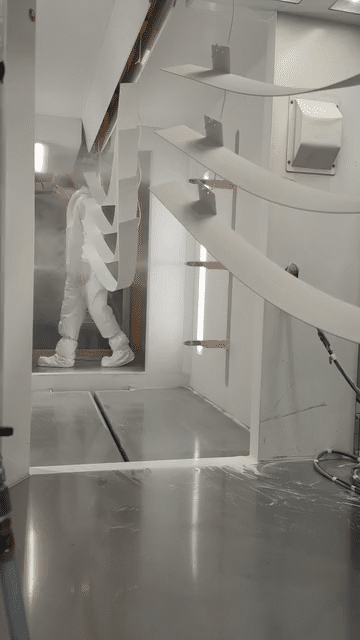
The materials your cabinet is constructed from, or painted with, can have a negative effect on the enclosed contents. If your cabinets are painted, ensure that the paint that’s been used doesn’t ‘off-gas’. Off gassing can be extremely harmful for works of art on paper, plastics, textiles and more, especially when in the microclimate of a drawer. Some coatings, such as enamel, are known to off-gas if not properly cured which could expose your items to acid migration.
Our Paint Process Our cabinets are powder-coated, it's the same process as used in sensitive medical equipment, they don't off-gas and they won't harm your collection. The steel used for our cabinets is washed with an alkali cleaner and rinsed with de-ionised water. The panels are then treated with Oxsilan, used with other additives to PH balance the material, passivate and provide a key for the powder coat paint. The powder coat is applied in layers in a booth where the paint is recycled internally preventing wastage and reducing air-pollution as shown on the video.
Wooden cabinets are not generally recommended for archival use due to potential acid migration, if you are using wood it’s important to line drawers with an acid free barrier material such as Marvelseal, or acid-free paper ensuring it is renewed regularly.
Testing your storage Our passive indicators are ideal for testing storage equipment and will help to quickly identify the presence of organic acids or ammonia in the storage environment, you can read more about environmental indicators here.
2. Drawers or doors that fit!
It sounds simple, but accurate close fitting drawers and doors are important to exclude dust and pests. Poor quality cabinets can be manufactured with sub-standard engineering tolerances, which can cause gaps and awkward operation. Monitor your storage areas with an insect trap to minimise risk, pay attention to any gaps where the cabinet meets the floor.
3. Would you like to stack?
Ensure, should your storage requirements change, that you can utilise the existing space and stack your plan chest cabinets thereby maximising your storage space. Don’t assume cabinets can be stacked in the future, some cabinets require extra support to enable stacking. Some of our cabinets are suitable for stacking up to three units high. If you’re planning to stack plan chest cabinets, don’t forget the top set of drawers may not be directly accessible due to their height.
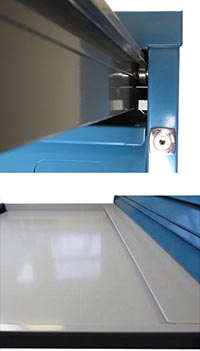
4. Can it take the load?
A full drawer, no matter what the contents, is a heavy drawer. Will they bow? Can the bearings or runners cope with the load? A smooth action is essential to avoid disturbing contents, overloaded drawers will fail, and could be unsafe both for the user and the contents. If possible, weigh contents, or a sample, to ensure you specify the correct load capacity. Our cabinets have a drawer load capacity of up to 100kg and high quality steel bearing runners.
5. Is there a catch?
The very last thing you want from your museum cabinet’s drawer system is for the contents to become trapped in the runners, or at the rear where you cannot easily see if there is an issue. Most high-quality museum specification cabinets are fully accessible and have mechanisms in place to prevent such problems, but it’s worth checking. See image to the right showing a drawer with a rear 'curl' to prevent those types of issues.
6. Is it safe for your collection and you?
To avoid issues when handling objects, a drawer which opens fully, without risk of tilting, gives you full visibility without needing to remove items.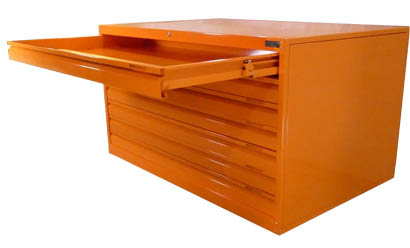 If the drawers can extend the full depth of the cabinet, is there a safety mechanism to prevent the unit from tipping? Our cabinets have a safety feature which will only allow one drawer to open at a time preventing the tipping risk.
If the drawers can extend the full depth of the cabinet, is there a safety mechanism to prevent the unit from tipping? Our cabinets have a safety feature which will only allow one drawer to open at a time preventing the tipping risk.
A smooth opening and full extension drawer is a ‘must’ with fragile items that need to be supported all around when being lifted in or out.
7. Does it look great?
Our range of cabinets can be painted any RAL colour to match your existing cabinets, brand livery or decor without compromising on the archival standard of the unit.
8. High enough?
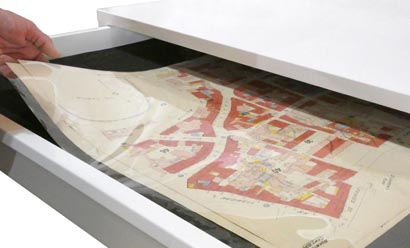
Height is an essential specification for both horizontal and vertical storage. Remember to consider Plastazote linings when specifying drawer heights to prevent objects fouling on the drawer or frame above. We are able to cut Plastazote linings to fit your plan chest drawers, contact us for more details.
Our standard range of museum plan chest drawer cabinets are available in sizes up to 1750mm (5ft 7”) wide, with drawer load capacities of up to 100kg.
View range of Plan chest cabinets
Tried and tested in museums around the UK for over 40 years, our cabinets are precision engineered to the finest standards to meet all of the above requirements. You can also choose from a range of archival quality RAL colours to complement your space without compromising on conservation standards.
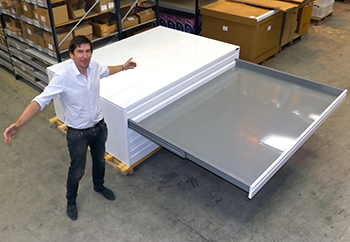 We are able to investigate bespoke options in our current cabinet designs. This bespoke design and size was requested by the customer, we had it handmade to museum specification in the UK. The cabinet measures over 2.3 metres wide and 1.6 metres deep, however the drawers still extend to their full depth with the lightest of force.
We are able to investigate bespoke options in our current cabinet designs. This bespoke design and size was requested by the customer, we had it handmade to museum specification in the UK. The cabinet measures over 2.3 metres wide and 1.6 metres deep, however the drawers still extend to their full depth with the lightest of force.
For more information contact us or see our range of museum storage cabinets and racking here.